What Should You Do To Avoid Colliding With Another Boat?
Avoiding collisions is vital for every boater. We all must do our part to prevent injury to our passengers, other boaters, and ourselves. Boat collisions can happen for many reasons that include:
- Operator error stemming from
- Inexperience
- Intoxication
- Lack of attention
- Rules violation
- Mechanical error
- Poor weather
- Hazardous water conditions, which include:
- Obstructions
- Rough seas
- The wake of other vessels
- Excessive speed
Each of these can be dealt with in different ways. Still, the basic standard for avoiding incidents is to ensure that you, as the boat operator, are clear-headed, well-informed, and paying attention to your vessel and the surrounding waters. Keep in mind that those things that can lead to a collision don’t have to affect you at all; they can affect the operator of a boat that collides with you.
Everything beyond being observant can aid in ensuring a safe voyage, but that is the basic standard you want to meet for a safe boating experience. And with that in mind, let’s delve into the details that will ensure you avoid collisions on the water.
Whose Fault is a Collision Between Boats?
Some boaters may not understand at first how it can be their responsibility if someone else is clearly at fault, but think of it this way. You’re in a small fishing boat and you’re heading directly towards a massive freighter that weighs over 100 tons. It’s heading at you at full speed but technically you have the right away. Are you going to not move because the other boat is wrong? Or are you going to get out of the way of a boat that will literally crush your boat to pieces? You’re going to move.
You don’t have to be in the wrong to be responsible. When the risk of property damage, injury or even death is on the table, it’s best to worry about whose fault it was later when everyone is safe and do the right thing by avoiding a collision at all costs.
So yes, a collision may be 100% not your fault, but it is still your responsibility to do whatever you safely can do to avoid it.
Watch for Other Boats
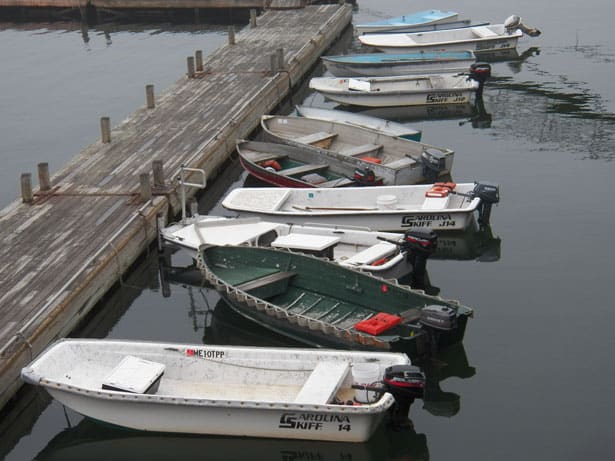
This sounds simplistic, but it’s the best thing to do, and it’s your number one tool for maintaining a safe time on the water. As a boat operator, you want a clean and unobstructed view of the water around your vessel. This allows you to see any other boats approaching from any direction.
- When you have an eye on another boat, make sure you observe any signals they may be making that indicate they are in trouble, they intend to pass you by, or they may be overtaking you.
- Listen for sound signals and also watch the visual signals they provide. Part of this will involve ensuring you understand those navigation rules so you can interpret lights and sounds to know what they mean.
- Regardless of signals and rules, however, common sense rules above all on the water. You must do whatever is necessary to avoid a collision, which may mean occasionally operating against the rules. You can never 100% rely on another boat to do what they’re “supposed to.”
- You don’t know the headspace of another boat operator. They could be inexperienced, they could be intoxicated, or they could be in the middle of a medical emergency. All of those could cause a boat to operate outside what you consider normal and become a risk. So that’s why you need to observe closely and always be cautious when getting close to another vessel, especially if things seem out of the ordinary.
- If you are about to overtake, be overtaken, or cross paths with a vessel and they cannot return the signals you provide, then definitely lower your speed and give a wide berth as you maneuver around them. If necessary or possible, you can give aid if the situation merits it, but otherwise, do what you can to stay out of the way and keep them out of your way as well.
- If you have passengers on the boat with you, having a lookout is also a good idea. Another set of eyes can help reduce the potential for any future accidents.
Stand On Boat and Give Way Boat
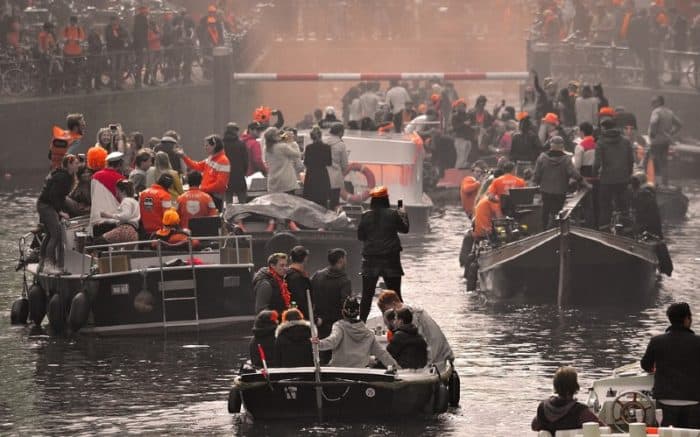
While it is the responsibility of both boaters to avoid a boat accident, that obviously doesn’t exist in a vacuum. You need to do specific things to smoothly operate on the water and avoid the potential for collisions as much as possible and that means understanding boating rules.
A stand on vessel is the one that has the right of way while the give way vessel is the one that should keep clear of the stand on vessel. In general, a stand on vessel should maintain course and speed when passing or crossing paths with other boats unless the give way vessel is not following the rules. This is when avoiding a collision comes into play and, even as the stand on vessel, you need to stop, reverse, alter course or whatever else is necessary to avoid a collision.
When another boat approaches you head to head, neither qualifies as the stand on and, in this case, you should both be altering course slightly so that you pass port to port to avoid a collision. One vessel blows a single horn blast to indicate the change in direction and the other vessel responds in kind to maintain communication and ensure both vessels know the other is moving starboard so they can each pass one another to port. It’s always best to proceed with caution in a situation like this just in case the other vessel is not able to fulfill their responsibilities.
Signals Boat Operators Need to Know to Avoid Boating Accidents
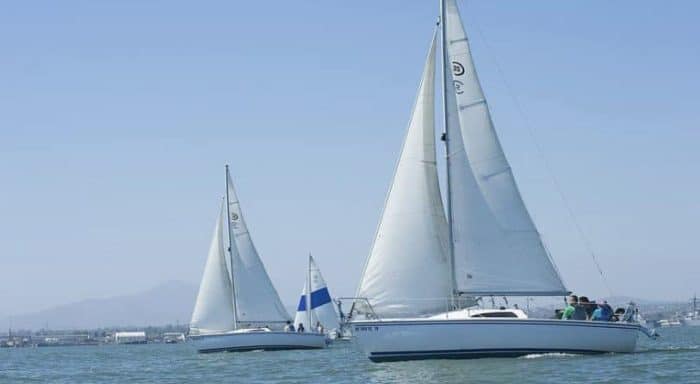
Sound signals are integral to avoiding collisions. You need to let other boaters know your intent so they can respond in kind.
One Short Horn Blast: This indicates your intent to alter course to starboard
Two Short Horn Blasts: This indicates that you intend to alter course to port
Three Short Horn Blasts: This tells other boaters you are backing up/using astern propulsion
Five Short Horn Blasts: This is an important signal to remember as it indicates you or the person sending the signal to you doesn’t understand intent. If you don’t know what the other boat is doing because they have not signaled or their signal made no sense, this will tell them you do not know how to proceed because you do not know how they are proceeding. Likewise, if another boat sends you this signal they are unclear about what you are doing. If that’s the case you need to signal them again and proceed with caution or stop outright until you both understand what is happening.
One Long Horn Blast: This is a warning signal that there is an unseen vessel in the water. If you can hear this signal you should reply in kind with a prolonged blast from your own. One horn blast also indicates you are leaving a dock or berth of some kind and are warning other boats. Likewise it’s a warning that you are approaching an obstruction or a blind turn.
One Prolonged Blast Every 2 Minutes: You need to do this if visibility is low. It will alert other boats, also unable to see that you are nearby and help prevent collisions.
Two Prolonged Blasts Every Two Minutes: This is another limited visibility signal that indicates you are in a power-driven boat but you are stopped in the water and not making way.
Avoid Floating Debris
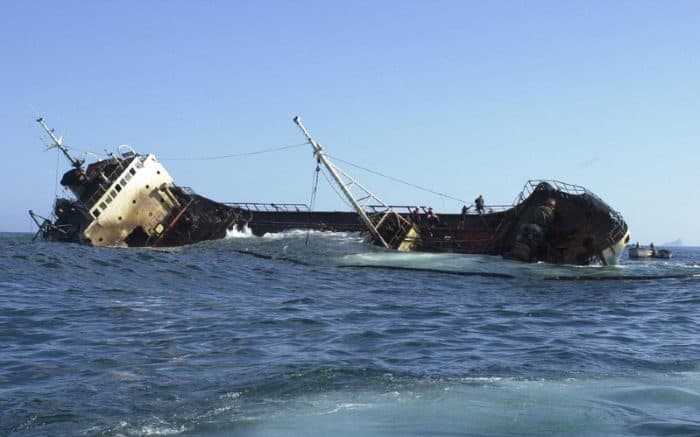
Floating debris is an issue because you can never predict when something will show up. That said, there are a few ways to help limit the potential dangers that floating debris could present for you.
- First and foremost, be aware that floating debris is far more likely after a storm. Wind, rain, and waves can churn up the bottom and disturb sunken debris and stuff that may have previously been lodged near shore or against something safely out of the way. A storm can release all of this into the open water again.
- In addition, bad storms are more able to destroy or otherwise disturb other vessels or things near the water. That, in turn, means more debris can end up in the water and find its way to your path. So if you’re out on the water within a day or so of a severe storm, ensure you’re using even more caution than usual.
- When debris is in the water, it can make boaters more reckless than usual. This is especially dangerous in tighter areas like the harbor or a canal. To avoid some floating trash or storm debris, boaters may lose focus on where other vessels and dangers are around them because their attention is now divided.
If you encounter debris and other boaters are around at the same time, you’ll need to be extra cautious as multiple factors at play can take not just your focus but the focus of those other boats.
How to Avoid a Fixed or Floating Object
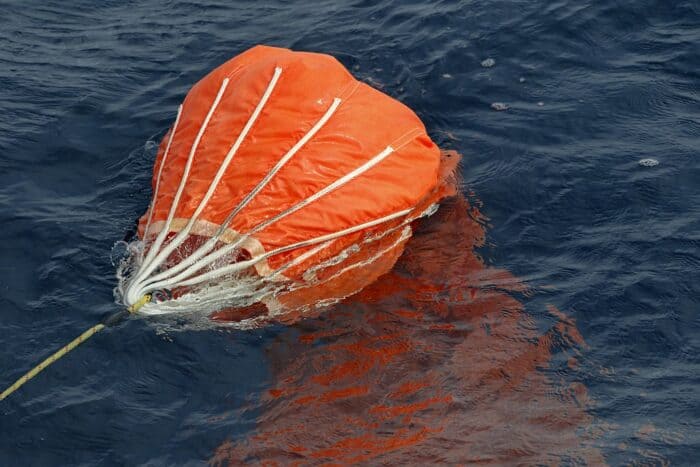
It’s hard to predict something like a random floating object in the water because it’s unexpected. Your fixed objects will be easier to watch out for because these should hopefully already be known and marked. Things like rocks, reefs, and wrecks were likely discovered long before you came along.
- Pay attention to warning buoys that indicate where hidden obstructions may be so you can easily navigate them.
- It’s always a good idea to familiarize yourself with charts in any given area so you can see where obstructions and other fixed points have been noted and if the depth of the water can present a risk to you and your boat at any particular moment.
- Your best defense will always be to keep a sharp watch. Never let yourself get so distracted you can’t see what’s ahead of you, and if you are in a situation with limited visibility or any issue hindering your ability to thoroughly observe your surroundings, reduce speed and proceed with caution.
- Use navigation aids around those fixed objects to help you avoid not just the fixed object but other boaters since you should both be following the rules relating to safely passing the danger by and avoiding each other.
Never Operate Your Boat When Tired or Inebriated
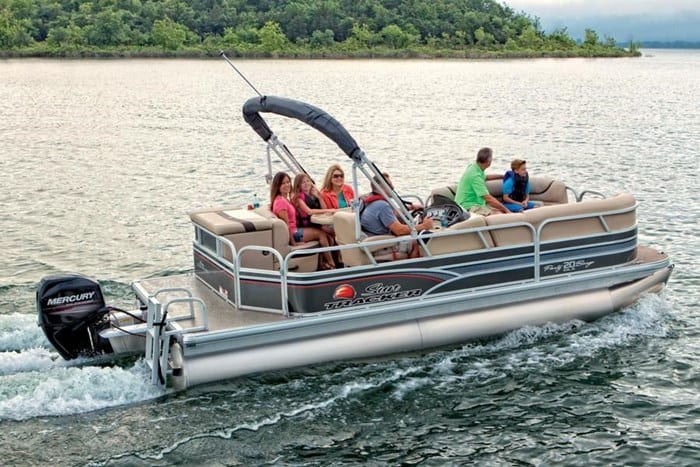
Far too often, boaters don’t respect their boats like they do cars. And we already know how often people use cars irresponsibly. But it tends to be worse on the water.
- According to the Coast Guard, in 2020, alcohol contributed to more boating deaths than any other single factor. In general, statistics show that alcohol and drug use contribute to around half of all boating accidents.
- Inattention, often due to being tired or intoxicated, was the single leading cause of accidents in 2020.
Because boating is considered a leisure time activity, many operators won’t take it seriously. They want to relax and have a good time with their passengers, but that can’t be done while you’re also operating the vessel. You need to make sure you’re keeping a clear head and paying attention, have someone else on board who can be the designated driver if necessary, or remain stationary for a long enough time that you can sober up before operating the boat again.
Maintain Safe Speeds
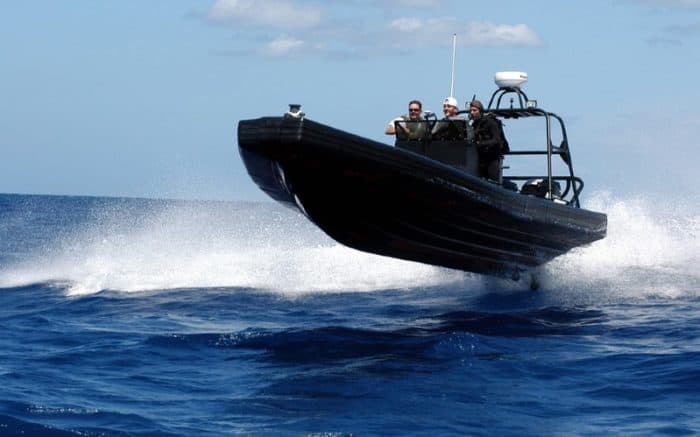
In addition to paying attention, you need to operate at safe speeds. The faster you go, the less time you have to react to dangerous situations. Also, you are more likely to suffer worse damage if something goes wrong. Other boaters also expect you to operate within a range of normal speeds. When you drive too fast, and when other boaters do, it’s not just your vessel that becomes a danger but potentially the wake as well.
Safe speeds change based on conditions. If you’re alone on the open sea, you can push your engines a little harder. But if you’re in an area with other boats, you’ll want to slow things down. This also applies if the weather is turning sour, it’s getting dark, or there’s limited visibility, the wind is picking up, and even if there are shifts in currents.
Use Caution in Poor Conditions
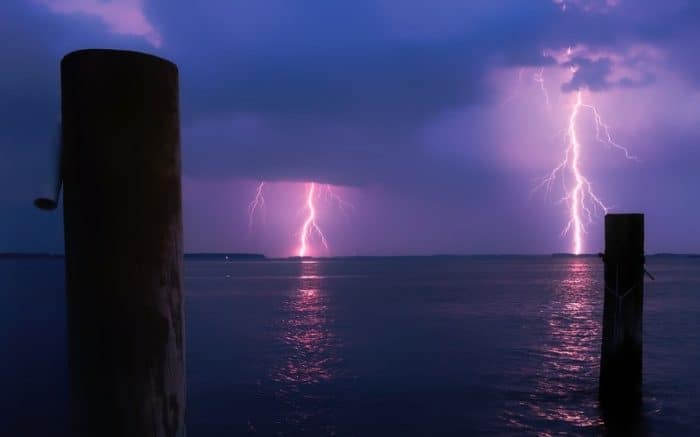
The best thing to do in heavy fog, rain, rough seas, and stormy weather is to return to shore. That said, if you are caught in those conditions with limited visibility, you need to slow your speed and always be cautious.
- Make use of sound signals in limited visibility.
- You must indicate your presence at intervals of no more than two minutes, whether you are underway or not, so that other vessels can listen and avoid you.
- If you’re at anchor, ring your bell every minute to indicate your position.
- A powered vessel underway in fog must emit one prolonged blast every two minutes. If powered but not underway, it’s two short blasts.
Most people consider poor visibility conditions only as things like darkness, fog, and bad weather. Remember that visibility can also suffer on a bright sunny day, particularly if you are traveling toward the sun. The sun’s glare off the water can easily obscure another vessel, and, in turn, it can conceal your own from their sight. Try to avoid traveling directly into the sun whenever possible. Do your best to make sure you’re highly visible to other vessels.
Give Room to Tug Boats and Other Vessels Towing or Pushing

A tugboat may pull a lot of weight behind it on a tow line, which can be surprisingly long. It’s also very possible that the line is below the water’s surface. For that reason, if you ever come across a tugboat in the water, you don’t want to pass directly behind it unless and until you’re positive nothing is being towed behind it.
Likewise, if a vessel is pushing something else, it will have obstructed visibility, so you want to ensure you give a wide distance so there’s no chance that the other vessel, unable to see where you are, pushes too close to you.
Avoid Shipping Lanes
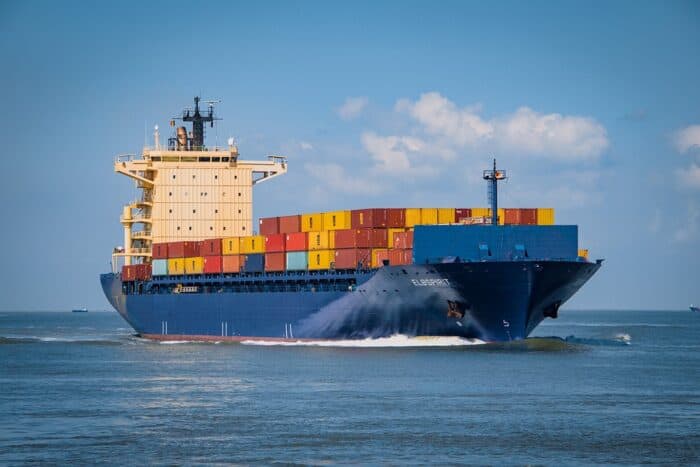
Big ships use shipping lanes, and those are places you want to avoid getting caught in a small, recreational vessel like a fishing boat or canoe by any means. These massive ships do not have the maneuverability to stop and work around small vessels, nor do they have the ability to see small vessels in their path very easily. In addition, they have the right of way in their lanes, which means shipping lanes are to be avoided at all costs.
Shipping lanes are marked on charts and usually take up about five miles of space across. Crossing in smaller vessels can take a considerable time, as much as an hour. That means you must be using your radar and paying attention to what’s around if and when you come to a shipping lane. Cross only at a 90-degree angle to make the absolute shortest trip possible, and you can’t stop inside a shipping lane for any reason.
If you find a large vessel bearing down on you in a shipping lane, remember that it may not be able to see you, it may not be able to reduce speed, and it’s expecting to have the right of way. If you hear a ship in one of these lanes emit 5 short warning blasts, it indicates that you need to get out of the way immediately and are in immediate danger.
Pay Attention to Navigation Aids
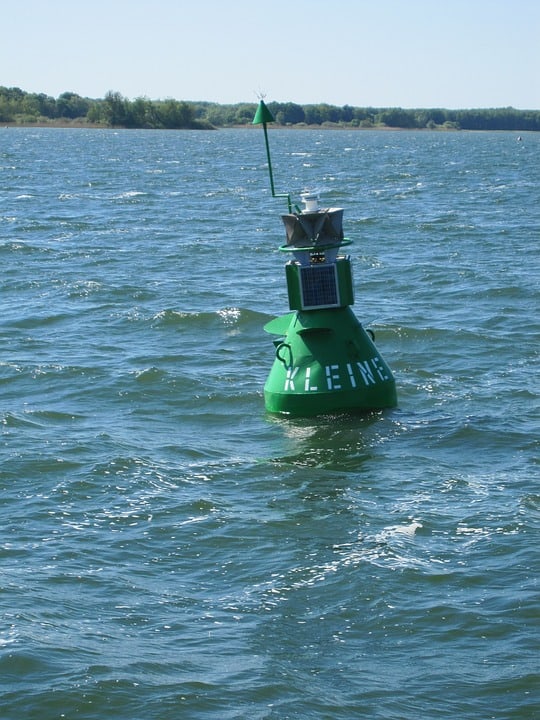
Navigation aids are some of the easiest and most reliable tools for keeping you and others safe on the water. Pay attention to the buoys, known as lateral markers, that help you navigate out to sea and back toward shore. The lights on these markers indicate on which side you should pass, which, in turn, ensures you’ll avoid other boats as well.
Additional markers will inform you about safe speeds, swimming areas, and hidden dangers. These are designed to keep you and everyone else safe, so familiarize yourself with the different kinds.
Ensure your aids, like running lights, are in good working order.
Keep Up To Date on the Rules

In much the same way you need to learn about the rules of the road for driving a car, you need to be sure you understand the rules of the road for boat navigation. This is integral in dealing with other vessels on the water because the sound and visual signals another boat may provide, and the ones they expect you to provide, will mean little if you have no idea what they represent. Knowing how to deal with a crossing vessel, congested traffic, and so on are crucial to avoiding collisions.
You need to know when you’re the stand-on or give-way vessel and how to act in each case. The rules can change for sailboats, motor boats, and rowing boats, so you must be aware.
- If you are in a power drive vessel and are meeting another power-driven vessel head-on, neither of you qualifies as the stand-on vessel and must both give way. Both of you should pass to the right or starboard side after making a sound signal indicating to do so. When overtaking, the vessel being overtaken becomes the stand-on, even if it is a powered vessel.
- When a power-driven vessel meets a sailing vessel head-on, the power-driven vessel is always the give-way vessel, and the sailing vessel is the stand-on.
- The meeting of sailing vessels can be slightly more confusing for boaters but remember, again, the overtaking vessel is always the give-way vessel. Otherwise, if you’re meeting another sailing vessel in any other situation, the sailing vessel with the wind to the port side is the give-way vessel.
- If both boats have the wind on the same side, the upwind vessel is the give-way.
Use sound and visual signals to indicate your intent to other boaters when you encounter them.
When Is a Written Boating Accident Report Required?
Under federal law, there are certain circumstances under which a written accident report must be filed. These include:
- The death of a person
- A person requiring medical treatment that goes beyond first aid as a result of injuries acquired in the accident
- A person disappearing from the vessel, such as a man overboard situation, under the circumstances indicating injury or death are likely.
- The destruction of the vessel
- Damage to vessels or other property totaling at least $2,000
The rules for providing a written report of a boating accident where only property was damaged can vary by state. Lower dollar amounts may require you to file a report in these cases. Any state not listed below adheres to the federal $2,000 standard. States also require reports to be filed within a time limit. Some are as long as 15 days, but others are as little as 48 hours.
- Arizona laws state you must file a report for $500 in damage or more
- Alaskan law is set at $500
- California is $500
- Colorado is $500
- Connecticut is $500
- Delaware is $500
- Idaho is $1,500
- Indiana is $750
- Kentucky is $500
- Louisiana is $500
- Maine has chosen $1,000
- Massachusetts is $500
- Mississippi is very low at just $100
- Missouri sets theirs at $500
- Montana is only $100
- Nebraska is $500
- New Mexico has a low bar of $100 in damages
- New York sets the bar at $1,000
- Ohio is $1,000
- South Carolina requires you to provide a written report for any accident resulting in damage over $500.
- South Dakota is $1,000
You should also be aware of who needs to get these reports. For instance, in Florida, you’d need to file with the Florida Fish and Wildlife Commission in Florida. In New Hampshire, it’s the Division of Safety Services. When in doubt, check with your local marina, the Coast Guard, or a lawyer.
The Bottom Line
You can use many tips and methods to keep yourself away from other vessels and avoid a collision at sea. Your best weapon is always to be observant, to keep an eye out for other boats, and to make sure they can easily see you.
Use caution around other boaters, and never assume they will always follow the rules when passing you or operating in your area.
Remember that common sense isn’t always all that common, and your goal is to do whatever is necessary when on the water to avoid an accident and keep yourself, your boat, and your crew safe, as well as keeping other boaters safe.
Categories: Boats










